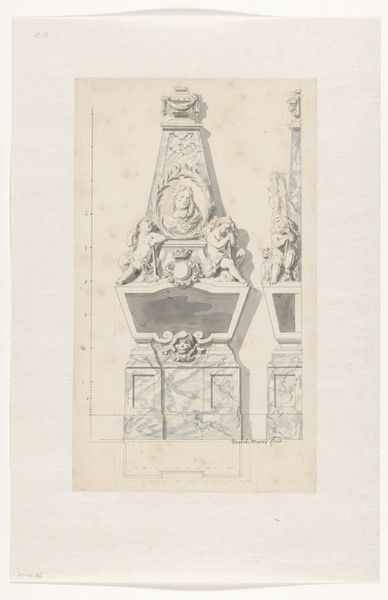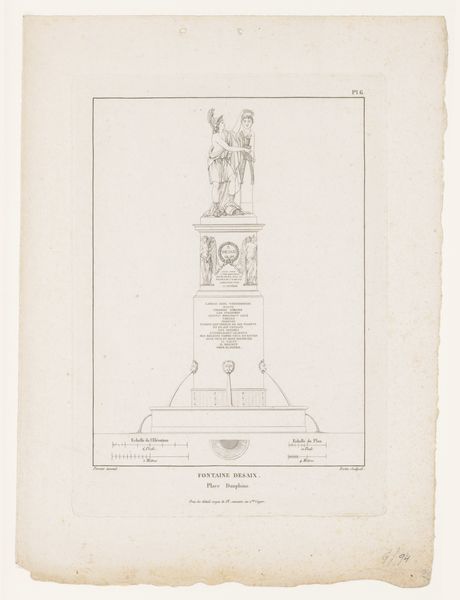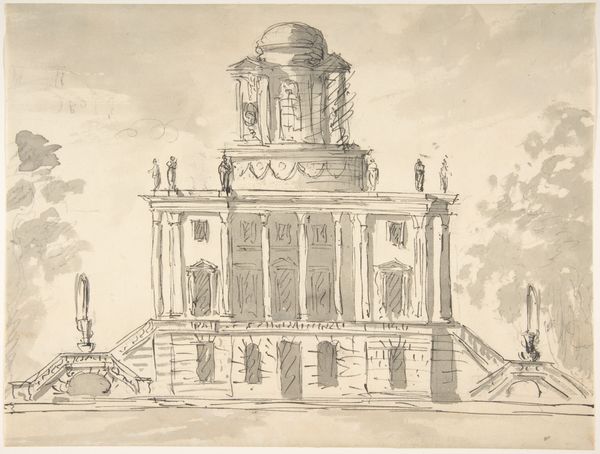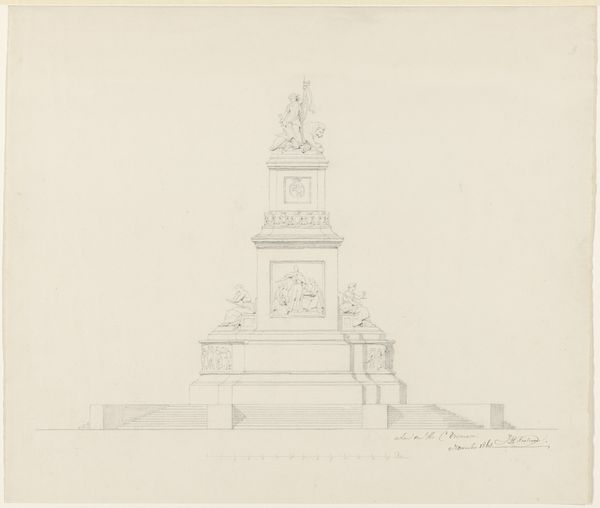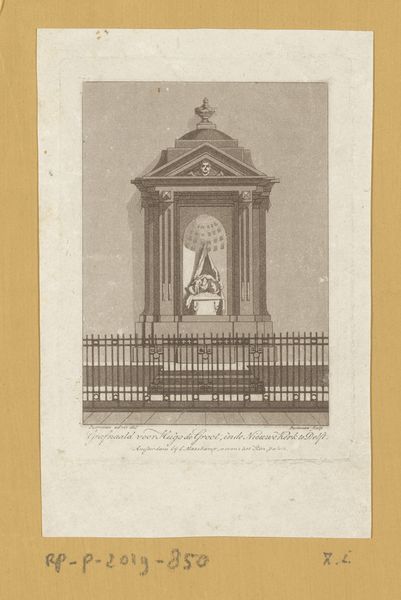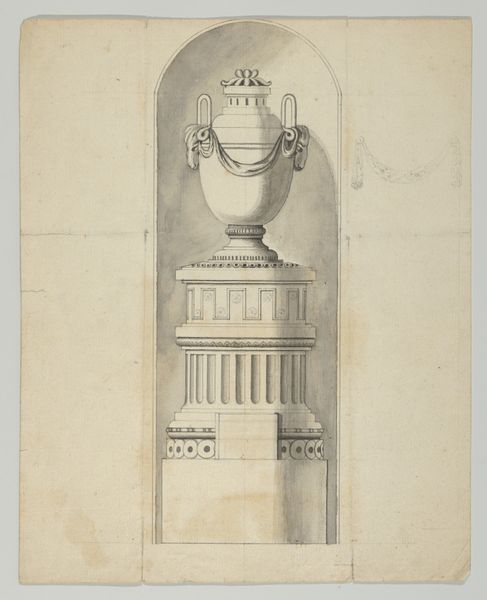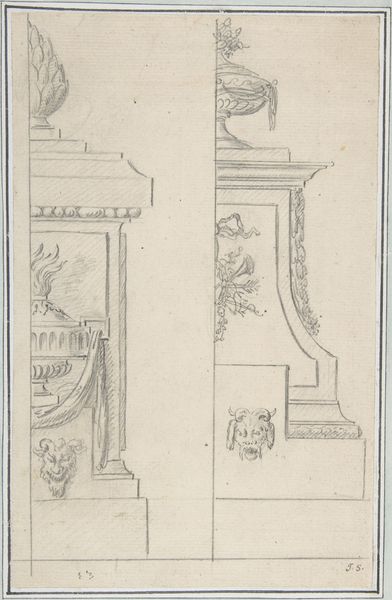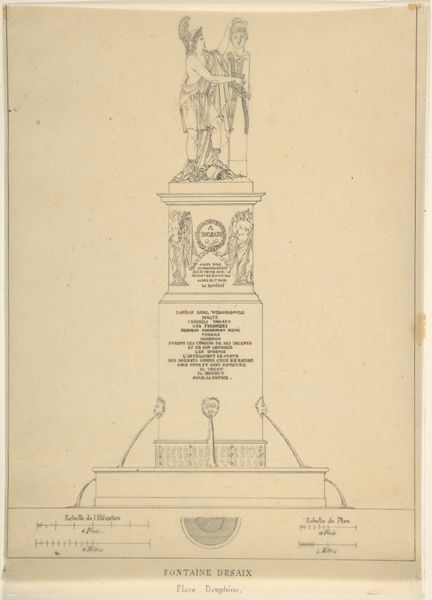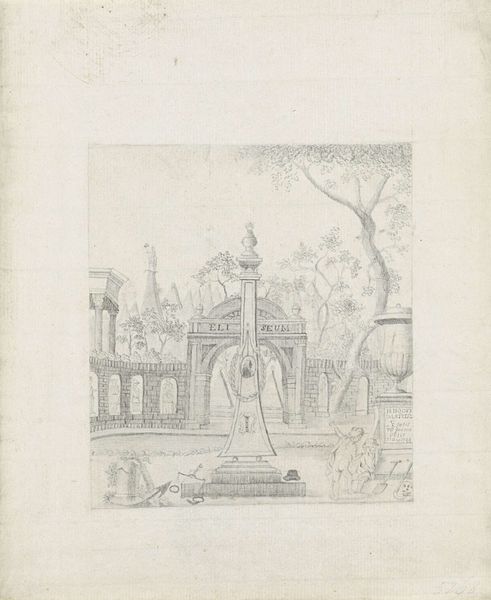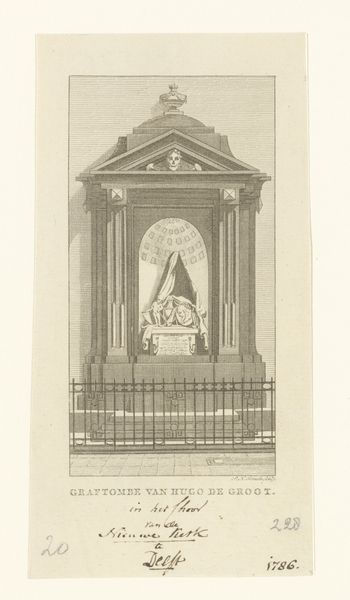
drawing, print, etching, ink, engraving, architecture
#
drawing
#
neoclassicism
# print
#
etching
#
etching
#
ink
#
cityscape
#
history-painting
#
engraving
#
architecture
Dimensions: height 288 mm, width 248 mm
Copyright: Rijks Museum: Open Domain
Curator: This etching, titled "De Revolutie, decoratie op het Koningsplein, 1795" by A. Verkerk, depicts a celebratory monument. It presents us with a moment in history through the lens of Neoclassical style. Editor: Stark and precise, the lines convey an order and structure reminiscent of enlightenment ideals; however, the pale and unornamented architectural structure appears somehow sterile. Curator: The print shows the means through which revolutionary ideas were materialised into temporary monuments intended to rally support and disseminate political thought amongst the masses. These objects shaped collective memory. Editor: Note the symmetry of the monument, and its clear geometric progression from the base, upward into a column; these shapes present an impression of stability. However, there are also soft circular details to offset the cold square lines. Curator: Look closely; flags representing liberty adorn the top of the structure. Such details highlight the monument's intent: to visibly demonstrate popular support for a nascent, emerging republic, even including elements of local context such as the seascape shown within the oval on the monument's face. Editor: The etching is composed by sharp angles and carefully drawn lines and shapes. Notice how the stark shapes contrasts with the softness of the trees drawn in the background. Curator: Considering that this etching immortalises a temporary structure erected in a public square, what was Verkerk’s material investment in recording what amounts to political propaganda? The production of the image itself as a means of promoting ideas and ideals matters, I think. Editor: The composition as a whole evokes both a spirit of progress and a deep awareness of the old order’s shadow. It masterfully encapsulates the feeling of hope during that period. Curator: True, but through the circulation of printed imagery like this one, popular sentiments would be influenced and molded, and such objects should be studied as forms of labour and material expression, too. Editor: Indeed. I depart with an enriched view, considering the dual role the aesthetics play in reinforcing revolutionary values within the broader production context.
Comments
No comments
Be the first to comment and join the conversation on the ultimate creative platform.


